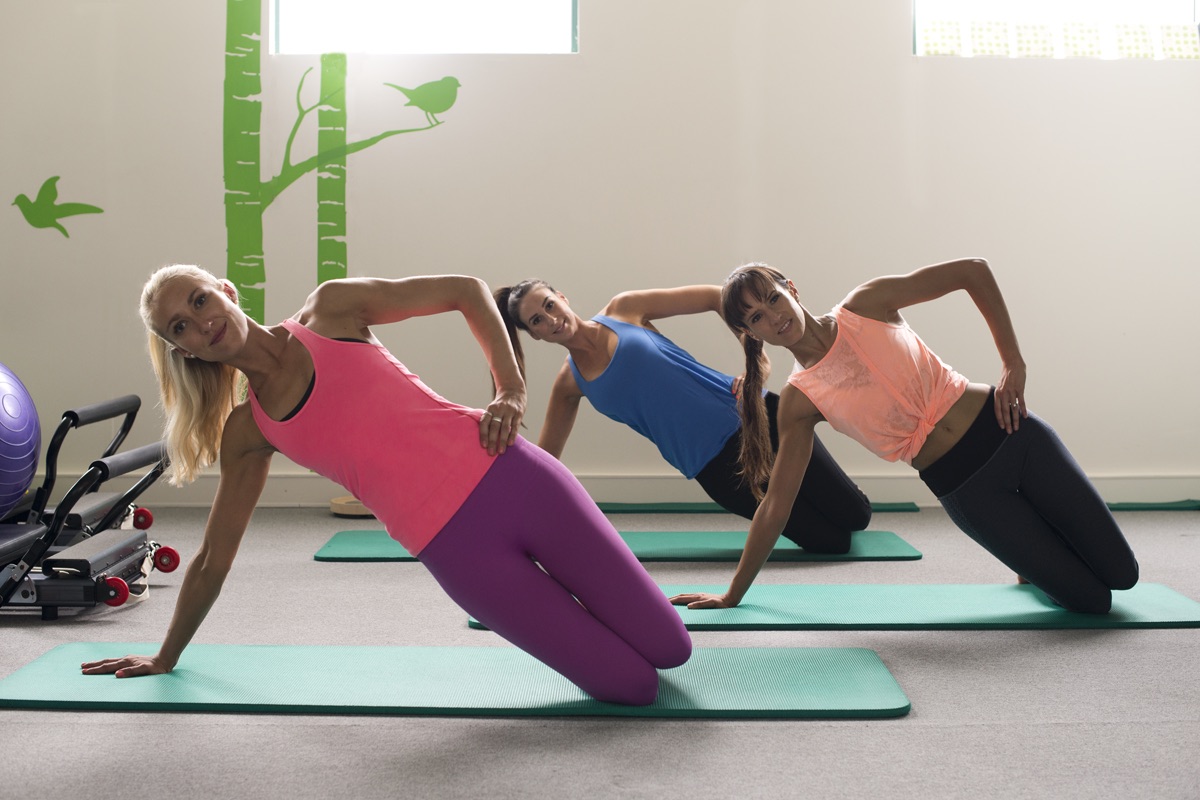APPI Matwork Pilates exercises & classifications
APPI Matwork Pilates

APPI Matwork Pilates exercises are broken down into classifications as follows:
- Static stabilisation
- Dynamic stabilisation
- Rotary stabilisation
- Mobility
- Controlled stretch
- Strength
- Rolling series
This video shows just a few examples from 4 of the above classifications which are covered in detail through the APPI matwork certification series.
Dynamic stabilisation:
One leg stretch level 2 - this exercise challenges lumbopelvic control with a sagittal plane movement. A nice progression once hip dissociation has been established through one leg stretch level 1 with the foot on the floor. Coming into an open chain movement slightly increases the demand on the global system with the focus being engaging the anterior oblique sling. If it's too much of a jump from the closed chain version, try using a gym ball under the foot of the moving leg.
Shoulder bridge level 1 - Although classified as dynamic stabilisation, this exercise is also a fantastic way to mobilise the spine into flexion as well as engage numerous muscle slings. There are many variations of shoulder bridge which allow you to bias different components of the exercise to target glut max, glut med or hamstrings.
Mobility:
Arm openings level 1: This is a lovely option to mobilise spinal rotation while challenging dissociation of the spine from the pelvis. Anyone experiencing stiffness in their thoracic spine will benefit from this exercise, take care of the glenohumeral joint position as the arm moves back in space especially in those with mobile shoulders or poor awareness.
Cobra: Pilates repertoire can be quite biased toward spinal flexion, but it's important to get a balance. Cobra is a great way to mobilise into extension. Take care not to hinge at the thoracolumbar junction which tends to be the most mobile part of the spine - aim for segmental articulation throughout.
Rotary Stabilisation:
Side kick level 3: A Pilates favourite to engage the lateral sling, in particular, gluteus medius, important for rotary pelvic control and lower limb alignment. The side lying position is challenging due to the reduced base of support, so trunk musculature will also be engaged especially as balance is challenged by the leverage of the moving leg.
Hip twist level 4: This challenging movement is indicated in the retraining of rotary lumbopelvic stability and groin rehabilitation. The anterior oblique sling, comprised of the external oblique and contralateral adductors is the focus - try doing this with a soft Pilates ball under the pelvis to really challenge the obliques!
Strength:
Crisscross level 2: An advanced exercise to strengthen the global abdominals once lumbopelvic stabilisation has been achieved in less challenging movements. Take care not to pull on the neck and aim to maintain neutral pelvis as the upper trunk rotates.
Leg pull in prone: A full body challenge, leg pull in prone requires good upper quadrant awareness and stability, upper body and core strength, as well as the ability to dissociate hip extension from the lumbar spine. Make sure you can maintain correct positioning in 4 point kneel before progressing to the plank position.
